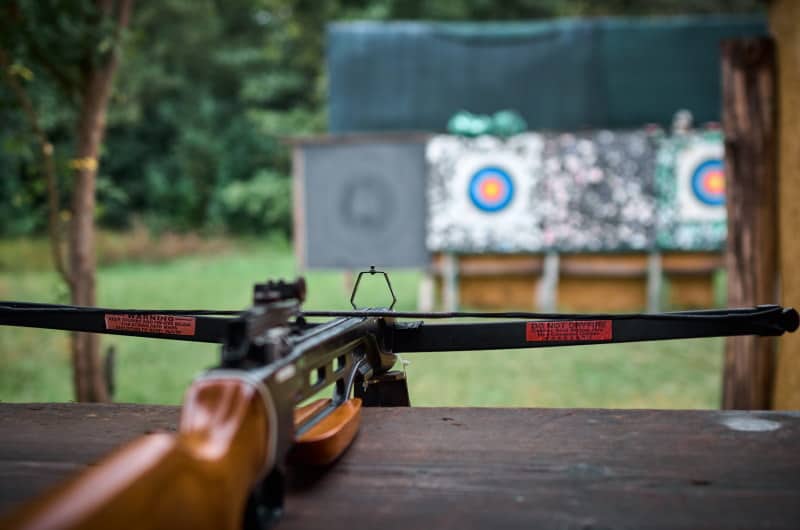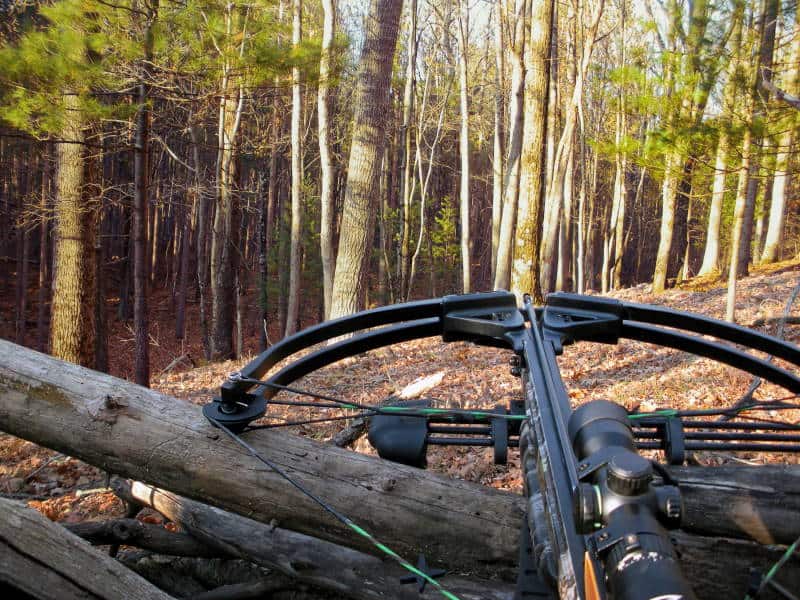Scopes are cool, but having a bore-sight or laser is much cooler. Thus, a question jumps out: can a crossbow be bore-sighted? If it can, such can be an amazing aspect to add for any hunter.
To answer that question—yes, a crossbow can be bore-sighted. It can be upgraded with different accessories, which also means it can have different attachments. They would all improve your ability to shoot and hunt.
However, it should be noted that such isn’t the end of the story. There is more to come from this heated debate of using scopes against bore-sighted targeting.
The Debate: Scope or Bore-Sight
First, let’s kick this off with a debate: bore-sight or scope? Is it really worth it to move from the standard scope and try a bore-sighted approach? Does bore-sight work better than a scope, or vice versa? Well, it’s not all black and white when it comes to that matter.
When you take a look at the usual crossbow, it’s obvious that the scope will be a part of it. There has to be an element that will help you guide your shot and hit your target. However, there also arises another problem.
Choosing one or the other option isn’t something you can do just based on a personal preference. Therefore, you will have to weigh out what the scope and bore-sight each provide. Depending on that, you can choose what suits your hunting or shooting style the best.
Luckily, there’s another thing to consider, which is that the crossbow is really flexible when it comes to accessories. You can literally add so many accessories and customize your crossbows that it sometimes feels like you are in a video game.
So, before you decide to pick any of the offered options, you should check out what makes them great and how each can help you to improve your hunting or shooting. Let’s start with the scope.
Scope

The scope is standard equipment when it comes to the crossbows. It’s basic because it gives you the advantage of seeing longer in the field, thus helping you also time your shot. However, that’s not all when it comes to scopes.
Scopes, like any other equipment or accessory, have both their good and bad side. For example, scopes are great in open environments where you can see clearly, so adding that extra sight can help you to time your shots and get a clear hit.
Yet, in an environment with a lot of greenery, it could actually come as a hindrance. If there are a lot of things that will get in the way of your shot, then trailing could be a better option than scoping.
That, of course, doesn’t mean you shouldn’t bring the scope. On the contrary, you should always have a scope nearby, so you can take out the animal if it’s a few extra yards away. So, the choice of the scope may come to the environment you are hunting in.
However, there is another thing to consider: your personal preference. When you meet a master archer, they will be utilizing their favorite equipment, regardless of the circumstances.
Additionally, there are different types of scopes, which will all give you different benefits, depending on your needs and environment. Let’s take a look at the best benefits a scope can give to your crossbow.
Grab yourself a high-quality scope to see how it can improve your accuracy.
Scope Benefits
The main benefit scope would be the ability to see your target better. The whole thing about scopes is that you ensure you hit your targets from greater distances. Of course, this shouldn’t be mistaken with a sniper.
Your scope should complement the ability of your crossbow. To be more precise, it should go well with your crossbow’s power to shoot. Having an ability to see at longer distances, but unable to hit the target would mean nothing. That’s a useless addition to a powerful weapon.
So, the best thing about scopes is that they are customizable to complement the weapon. They are also built to withstand different environments. For example, it may not seem that you need that resistant of a crossbow when you are hunting in the woods.
Then, the crossbow can come with higher resistance to any type of climate or terrain. And, it can also have a higher durability, so, even if you hit it or the crossbows fall, it won’t break, giving you a better ability to trail your prey and be more successful in difficult environments.
That’s all pretty amazing, yet, before you give your final judgment, you should still look at the bore-sighted option.
Keep in mind that a good scope doesn’t mean a perfect shot. There’s lots of reasons your shot might go off target. Check out the following articles to learn why your crossbow might be off target:
Bore-Sighted

Bore-sighted crossbows have one main feature, which is to give you a closer look at the target. In short, using a bore-sighted scope will help you have a better sight on your target at the shorter distances.
For example, if you configured a bore-sighted crossbow, you could have a better look when you are hunting at a distance of 20 yards. It may also give you a better outlook on the target than a scope would.
For instance, when you are targeting with a bore-sighted scope, you would literally see the target with more precision than you would with a scope. More importantly, it will help you use your crossbow with less skill.
The reason behind this is simple—when you use a bore-sight, you are using a different mode of scoping than when you are using a regular scope. The very idea of it is that you won’t have to judge as much distance when calculating your shot. Instead, you would have a direct way to see and fire at your target.
To make it even more contemporary, you can attach a laser as a bore-sighted variant. A laser is a great way for shooting at short distances because it will give you a direct link to your target’s vital points.
That’s just one of the many benefits of this type of scope. There are other benefits as well. You can see these in action, along with tips, in this video:
Bore-Sighted Benefits
When you use a bore-sighted scope, it will be a lot better when hunting at a shorter distance. For example, you will have a better outlook on the target and you won’t need to measure the distance. You just aim and shoot.
Additionally, a bore-sighted scope may come as a great benefit in areas where shooting with a scope will be a lot harder due to the environment. For example, if you are hunting in snow, a bore-sighted scope may be hugely beneficial.
A bore-sighted scope will be especially useful in that case if you are using it with a laser, as picking out your target will be much easier than it would be with a regular scope. Also, if you are hunting on terrain with a lot of greenery, then your laser can help you pinpoint the target. After that, you would merely point and shoot.
The biggest drawback to a bore-sighted scope is that it isn’t really reliable after 20-30 yards of distance. Beyond that, it becomes much harder to utilize it’s precision, simply because it wasn’t made to offer you sight beyond that.
So, it all comes down to the practical field test.
Practical Field Test
Let’s try to pit those two against each other in practice. When you are out there hunting, you’ll see the true difference between a regular scope and a bore-sighted scope. Although this may come as a shock, there is no comparison—it’s best to use both at the same time.
For example, what purpose should you serve if you only have one option when you can use it at the same time? If you can combine their benefits, wouldn’t you get an ultimate hunting crossbow?
Try to look at it in the following manner: you are hunting and trailing your prey. You see it at a distance of 40 yards, and you know you can get a shot with your crossbow. You shoot and you miss. However, the trailing isn’t over, so you continue to follow it. As you trail it, you enter a field with a lot of greenery.
You can then change the scope to a bore-sighted one. Now, you can use your laser, and the deer isn’t alarmed by the red dot. You approach at the distance of 20 yards, and you have a clear shot. You remove the safety, and pull the trigger.
The deer falls right to the ground, and you have yourself a catch.
Utilize What Works for You
Now, you can see how you can get the most out of combining these two types of scopes. However, you shouldn’t be forced to that. You should ultimately be using what works for you.
That’s the whole point of having a choice in the first place—try to use both and see what works best for you. Test them both out and find your sweet spot. Once you do that, the hunt will become a much more interesting experience.

